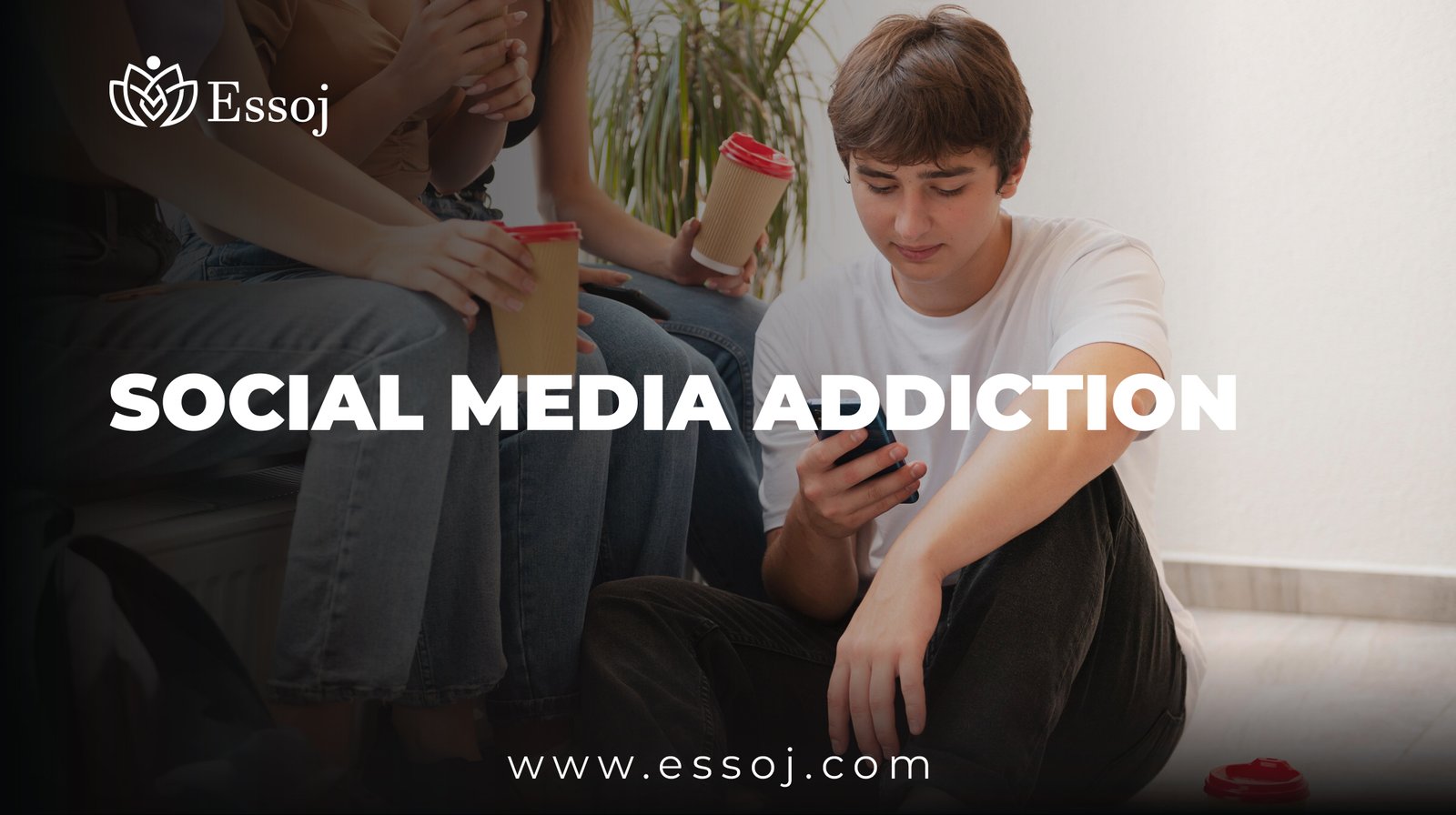In today’s fast-paced, technology-driven world, social media has become a staple in our daily routines. Platforms like Instagram, Facebook, TikTok, and Snapchat offer endless opportunities for connection, entertainment, and self-expression. However, while these platforms offer undeniable benefits, they also come with their own set of challenges. One of the most concerning among these is social media addiction. This problem is increasingly common, especially among teens, who seem to be particularly vulnerable to the pull of constant online interaction.
This article takes a deep dive into the issue of social media addiction, exploring why it has become such a widespread concern, why teenagers are especially at risk, and how this addiction can affect various aspects of life. Moreover, it offers actionable advice and a step-by-step guide for individuals looking to regain control over their social media use.
Understanding Social Media Addiction
Social media addiction is not just about liking or posting too much. It’s a behavioral condition where an individual feels an uncontrollable urge to engage with social networking platforms to the extent that it negatively impacts their everyday life.
What Does Social Media Addiction Look Like?
People suffering from this addiction may find themselves:
- Checking their phone every few minutes
- Feeling anxious or upset when unable to access social media
- Spending hours scrolling, even when other important tasks demand attention
- Ignoring face-to-face relationships in favor of virtual connections
This compulsion is similar to other forms of addiction, involving changes in brain chemistry and emotional responses that make it difficult to stop.
The Psychology Behind Social Media Addiction
To understand why social media addiction is so pervasive, it’s helpful to look at the psychological mechanics behind it.
Dopamine and Reward Systems
Each time we receive a notification, like, or comment, our brains release dopamine—a neurotransmitter associated with pleasure and reward. This creates a feedback loop where users repeatedly seek out social media interactions to feel good. Over time, this can lead to compulsive behavior.
The Role of Algorithms
Social media platforms use sophisticated algorithms designed to show content tailored to our interests, keeping us engaged for longer periods. These algorithms prioritize posts that generate emotional reactions, whether positive or negative, making it harder to disengage.
Social Comparison and Validation
Many users, especially teens, compare themselves to the idealized versions of others’ lives presented online. This can create feelings of inadequacy and a constant need for validation, driving them to seek approval through likes and comments.
Why Are Teens Especially Vulnerable?
Teens today have grown up with social media as a central part of their social lives. This generation’s relationship with technology is fundamentally different from that of older generations.
Developmental Factors
During adolescence, the brain undergoes significant growth and change, particularly in areas related to impulse control and emotional regulation. This makes teens more prone to risk-taking and less able to resist addictive behaviors.
Peer Influence and Pressure
For many teens, social media is not just a pastime but a vital tool for social interaction and acceptance. The pressure to fit in, appear popular, or be constantly available can lead to excessive use.
Identity and Self-Expression
Teens often use social media to explore who they are and how they want to be seen by others. While this can be a positive experience, it can also cause stress and anxiety when the feedback is negative or when they feel the need to present a perfect image.
Anecdote: Mia’s Journey
Mia, a 15-year-old high school student, initially used social media to stay connected with friends and share her artwork. However, over time, she found herself spending upwards of five hours a day online. Her mood became increasingly dependent on how many likes and comments she received, leading to feelings of sadness and isolation when her posts didn’t get much attention.
Mia’s story is common, and her eventual decision to seek help and set boundaries with her social media use made a significant difference in her mental health and overall happiness.
Signs You Might Be Experiencing Social Media Addiction
Recognizing social media addiction early can help prevent more serious problems. Here are some symptoms to watch for:
- You feel restless or anxious when you can’t check your social media accounts.
- Social media use interferes with your responsibilities at school, work, or home.
- You spend more time than intended on social media platforms.
- You neglect real-life relationships and activities to spend time online.
- You lie about how much time you spend on social media.
- You use social media to escape feelings of boredom, sadness, or loneliness.
The Effects of Social Media Addiction
The impact of social media addiction extends beyond just lost time. It can affect mental health, physical health, and personal relationships.
Mental Health Concerns
Excessive social media use is linked to anxiety, depression, and low self-esteem. Constant exposure to curated, idealized images can make users feel inadequate or dissatisfied with their own lives.
Sleep Disruption
Many users browse social media late into the night, which interferes with natural sleep cycles and leads to fatigue, impaired concentration, and mood swings.
Physical Health
Reduced physical activity and increased sedentary behavior associated with heavy social media use contribute to weight gain, poor posture, and other health issues.
Social Isolation
While social media offers a sense of connection, overuse can ironically increase feelings of loneliness and isolation, as online interactions don’t fully replace face-to-face contact.
A Step-by-Step Guide to Reducing Social Media Addiction
Breaking free from the grip of social media addiction is challenging but possible. Here is a practical approach to regaining control:
Step 1: Acknowledge the Issue
The first and most important step is recognizing that social media use may have become problematic. Be honest with yourself about how it affects your mood, productivity, and relationships.
Step 2: Monitor Your Usage
Use phone or app tools to track how much time you spend on social media daily. Seeing the numbers can be eye-opening.
Step 3: Set Boundaries
Decide on reasonable daily limits for social media use. You can set specific times during the day when you allow yourself to check apps.
Step 4: Turn Off Notifications
Notifications are designed to grab your attention constantly. Turning them off reduces the urge to check social media compulsively.
Step 5: Create Phone-Free Zones
Establish times and places where phones aren’t allowed, such as during meals, study hours, or before bedtime.
Step 6: Find Alternative Activities
Engage in hobbies, exercise, or spend time with family and friends offline. Filling your time with meaningful activities reduces reliance on social media for entertainment.
Step 7: Seek Support
Talk to trusted friends, family members, or counselors about your goals. Having support makes the journey easier and more successful.
Helping Teens Navigate Social Media Responsibly
Parents, educators, and caregivers can play a crucial role in preventing and addressing social media addiction among teens.
Encourage Open Dialogue
Discuss the benefits and risks of social media openly. Help teens understand how to use platforms mindfully.
Model Healthy Habits
Adults should set examples by managing their own screen time and demonstrating balanced digital behavior.
Promote Offline Activities
Encourage participation in sports, clubs, and face-to-face social events to build real-world connections.
Educate About Digital Literacy
Teaching teens to critically evaluate online content helps them avoid negative influences and unrealistic comparisons.
Final Thoughts
Social media addiction is a serious issue impacting millions worldwide, especially impressionable teens. While social media provides incredible opportunities for connection and creativity, it is crucial to be aware of its potential pitfalls.
Understanding why this addiction occurs, recognizing the signs, and knowing how to respond effectively can make a world of difference. Whether you are personally affected or helping someone else, taking gradual, thoughtful steps can lead to healthier habits and improved well-being.
By combining practical strategies with supportive conversations rooted in ESSOJ principles—essential social journalism values like honesty, clarity, and respect—we can foster a balanced relationship with social media that enriches life rather than detracts from it.

